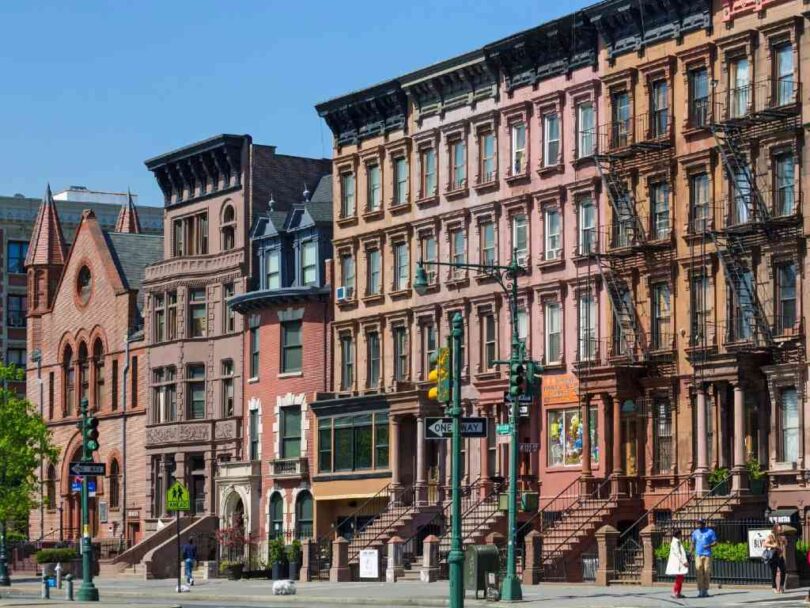Harlem Subway Station Set to Receive Accessibility Upgrades
“Harlem is a language, a rhythm and symphony, and a state of mind.” – Ruby Dee. It looks like Harlem commuters are in for a treat – the 3-train stop at 148th Street is one of the fortunate few that will be receiving necessary upgrades to make it accessible to those with disabilities. It’s exciting news, indeed; when complete, it’ll mean no more long treks for people from other stations in order to get where they need to go. The MTA has been relatively tight-lipped on what exact accessibility upgrades the station will receive – but hopefully by year end commuters can expect some much needed relief from their current obstacles.
Transforming Transportation: Harlem’s 148th Street Subway Station Set for Upgrades
The news about the upcoming accessibility upgrades to the 148th Street 3-train stop at Harlem subway station is big! With 126 subway stations having already been made accessible for people with disabilities out of 472 total, these further improvements will be absolutely welcomed, as stated by the local government. It was also recently revealed that 29 elevators will be installed at various subway stops across all five boroughs as well, and 17 subway stations are set to receive extensive accessibility upgrades like the newly announced one in Harlem. This is a mammoth step forward in improving not just access but convenience as well throughout New York City’s transit system. Not only does this equalize transport inequality for physically disabled citizens, but it makes sidewalks more usable for those who rely on wheelchairs or other mobility aids as well–leading to increased opportunities and a more pleasant commute experience.
Building a Safe Future: MTA’s Ambitious Plans for Accessibility Measures
The MTA also plans to focus on improved ADA compliance with the aim of making traveling easier and safer for those who require it most — particularly elderly riders, people with disabilities or mobility issues such as limited vision, hearing impairments or other physical challenges. Under these plans, 81 subway stations across multiple lines will become accessible by 2025 while a total of 95 percent penetration by 2055 is set as a goal throughout all MTA network routes, as highlighted by NYTimes. The improvements at Harlem station are expected to include wheelchair ramps both inside and outside of elevators located in different areas, escalators designed specifically with wider lanes allowing wheelchairs unobstructed passage, power doors equipped with audio announcements. This would also make the subways more accessible and safe for the elderly and it is expected that same ADA compliance would also be made in the parking lots in the near future. Thanks to these necessary accessibility measures being put into place at subsequent stations throughout the 2021–2025 timeline, disabled and the elderly riders can feel confident leaving segregated accommodations back home when utilizing public transportation.
On the Fast Track: Exploring Harlems and New York’s Bold Vision of the Fast Forward Plan
Executives at Fastforward state that the long-term goal of this program is to make every station accessible for people with disabilities within 15 years and increase accessibility for 50 stations within five years. This plan also includes expanding on existing transit lines into areas such as East Harlem and parts of the Bronx that are currently facing transportation deficiencies. Unfortunately, funding sources have become uncertain recently due to its initial combination of city, state, and federal contributions totaling around $40 billion over 10 years—which could compromise projected timelines if not remedied soon. Hopefully, though necessary steps can be taken in order to reverse this potential outcome so that millions who rely on public transit will continue to benefit from these infrastructure improvements in neighborhoods like Harlem.
Community Empowerment: How Harlem’s Involvement Shaped Subway Station Upgrades
The upgrades discussed above are all thanks to the dedicated efforts of the amazing people of Harlem and New York. All of these people have taken a stand for equitable mobility access in order to benefit individuals with disabilities. This also includes some prominent advocacy groups – for instance, riseandresist.org reports that Elevator Action Group has been working on legislating wheelchair accessibility in the MTA agenda ever since they were formed as a coalition bringing concerned New Yorkers and activists together for this purpose. Furthermore, TransitCenter just published the findings regarding 50 stations which are made accessible along with providing suggestions such as elevators and ramps so that individuals having disabilities can use them effectively. Last but not least, the Harlem To Hollis Initiative has approved zoning rules which will make it possible for MTA officials to bring forward private development swiftly while also saving taxpayers’ money in the process towards making transit more accessible without any compromise with safety or quality standards.
These groundbreaking initiatives are spearheading change by ensuring that everyone – regardless of ability – has access to public transport so they can move around freely.
~ By Jennifer Dawson







